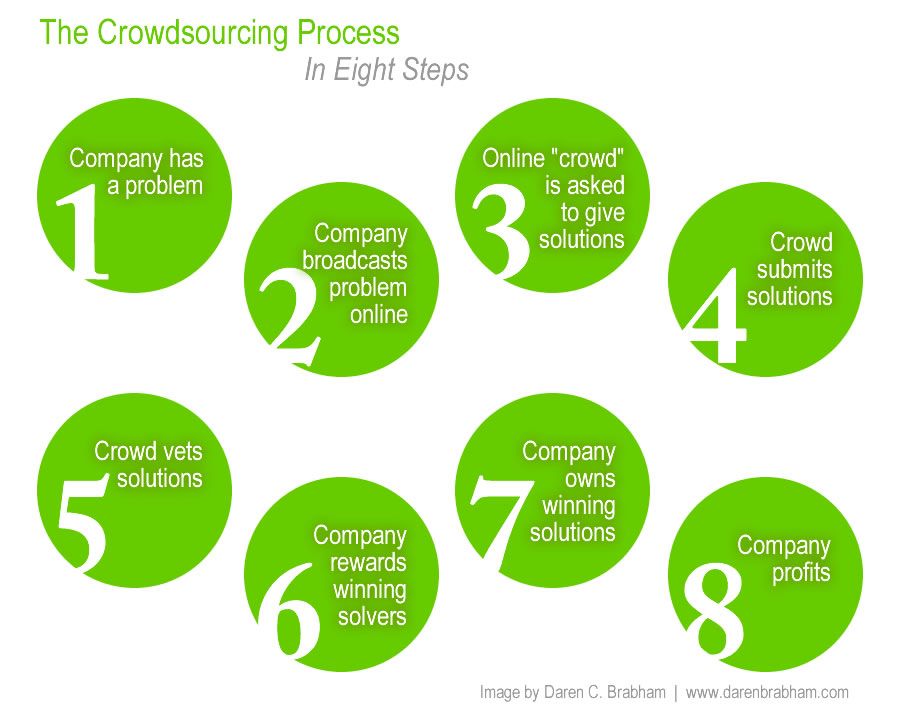Crowdsourcing is the practice of gathering ideas, solutions, or resources from a large group of people, usually via the internet. It is especially valuable in today’s digital age because it allows businesses and researchers to tap into the collective intelligence of diverse groups. As a result, crowdsourcing can speed up creative problem-solving and uncover innovative insights that might otherwise be missed by a small team.
For example, imagine a teacher asking every student in a classroom for a creative project idea. By pooling everyone’s suggestions, the teacher gains fresh perspectives. Crowdsourcing works the same way on a global scale. Therefore, it has become a powerful method to address complex tasks. This approach highlights how people participate in problem-solving processes at scale, thanks to easy access to technology and data.
What We Review
How Crowdsourcing Works
At its core, crowdsourcing relies on online platforms where people can submit ideas, tasks, or feedback. These submissions can take many forms, such as survey responses, design concepts, or scientific observations. Next, the platform organizes these contributions so that the individuals or organizations requesting help can analyze them efficiently.
A simple analogy is a communal cookbook: each person contributes a recipe, and the collective result is a diverse cookbook filled with many eating options. In crowdsourcing examples, technology serves as the tool that connects hundreds or even thousands of people across the globe. Consequently, platforms like GitHub (for software) or Wikipedia (for information) thrive because they integrate contributions from countless individuals. This model depends on clear instructions, fairness, and user-friendly interfaces to encourage widespread participation.
Types of Crowdsourcing
Crowdfunding
Crowdfunding is a popular form of crowdsourcing that focuses on raising money for projects. On platforms like Kickstarter or GoFundMe, creators explain their ideas and invite the public to contribute funds. Contributors usually receive rewards ranging from a simple thank-you to early product samples. As a result, even everyday people can bring their dreams to life without traditional bank loans or investments.
Crowdsolving
Crowdsolving involves posting a problem online for a large community to solve. For instance, these services can host scientific and technical challenges where professionals and amateurs alike propose solutions. When a solution works, the solver often earns a monetary reward. This is similar to asking a huge brainstorming group for the best idea, then picking the most effective approach.
Citizen Science
Citizen science invites everyday individuals to contribute to real scientific work. Platforms such as Zooniverse allow participants to classify images of galaxies or record biodiversity in their neighborhoods. It is research powered by regular people who use their personal devices to gather and share data. This method has helped scientists handle massive amounts of information that would otherwise take years to process.
Microtasking
Microtasking breaks large projects into tiny tasks that people can complete quickly online. Websites like Amazon Mechanical Turk post brief assignments such as labeling pictures or transcribing audio. Each participant handles a small slice of the whole project. Consequently, organizations achieve big milestones by coordinating many people’s small contributions. This approach can be compared to assembling a puzzle: each person works on a single piece, and eventually the complete picture emerges.
Benefits of Crowdsourcing
- Access to diverse ideas. Crowdsourcing connects professionals, hobbyists, and even curious beginners, leading to unexpected and creative solutions.
- Cost-effectiveness. Instead of hiring a large staff to tackle a project, organizations can tap into volunteers or part-time helpers.
- Efficiency. With many individuals contributing, solutions or data collection can happen much faster.
- Enhanced collaboration. Human capabilities grow when people work together over a network, sharing knowledge and resources.
Consider a charity that needs to design a new logo. It might open a design contest to volunteers worldwide. Over time, they receive hundreds of unique designs, which accelerates the creative process and keeps costs low, illustrating the power of crowdsourcing.
Challenges and Limitations of Crowdsourcing
While crowdsourcing offers clear benefits, it is not without obstacles:
- Quality control concerns: With many contributors, maintaining high standards and consistent results can be tricky.
- The need for clear guidelines: Ambiguous or poorly stated tasks lead to confusion and lower-quality submissions.
- Potential biases in data: When contributors are not diverse, the data might reflect only a narrow viewpoint.
- Managing large-scale projects: Without proper organization, a massive influx of ideas can overwhelm or confuse project leaders.
For example, imagine a crowdsourced survey where most people providing opinions come from one region. The survey results may not represent global perspectives. Therefore, careful planning and monitoring are essential for successful crowdsourcing campaigns.
Real-World Applications of Crowdsourcing
Crowdsourcing has transformed business, science, and community projects in remarkable ways. In business, crowdsourced logos, product ideas, and reviews help companies refine their offerings. In science, “citizen science” initiatives like tracking bird migrations assist researchers who cannot be everywhere at once. Meanwhile, social causes rely on crowdfunding to support disaster relief or public health projects, allowing communities to recover rapidly.
One noteworthy example is how scientific teams use citizen science to classify marine animals in underwater footage. By posting the videos online, they invite nature enthusiasts to identify species, saving the researchers countless hours of review. Consequently, crowdsourcing fosters a sense of shared purpose and shows how technology brings people together to accomplish tasks that benefit society.
Key Terms to Know
- Crowdsourcing – The practice of obtaining ideas, tasks, or content from a large group of people via the internet
- Citizen Science – Research projects where volunteers, often non-scientists, assist in collecting or analyzing data
- Microtasking – Breaking a large task into small assignments that many people complete online
- Crowdsolving – Presenting a problem publicly for a group to solve collaboratively
- Crowdfunding – Raising funds from a large number of people to support a project or idea
Conclusion
Crowdsourcing stands as a testament to how people can collaborate at scale to solve problems. By harnessing internet platforms, complex tasks become more manageable when distributed among many contributors. As a result, individuals and societies can address challenges—from product design to scientific research—in ways that were not possible a few decades ago.
Students can explore crowdsourcing by joining citizen science projects or creating their own campaigns. For example, trying a simple puzzle-labeling task online can demonstrate how microtasking works in practice. Ultimately, crowdsourcing demonstrates how widespread access to information and public data transforms the way people learn and innovate. It invites everyone to be part of something bigger, no matter their location or skill set.
Sharpen Your Skills for AP® Computer Science Principles
Are you preparing for the AP® Computer Science Principles test? We’ve got you covered! Try our review articles designed to help you confidently tackle real-world AP® Computer Science Principles questions. You’ll find everything you need to succeed, from quick tips to detailed strategies. Start exploring now!
- AP® Computer Science Principles 5.1 Review
- AP® Computer Science Principles 5.2 Review
- AP® Computer Science Principles 5.3 Review
Need help preparing for your AP® Computer Science Principles exam?
Albert has hundreds of AP® Computer Science Principles practice questions and full-length practice tests to try out.









